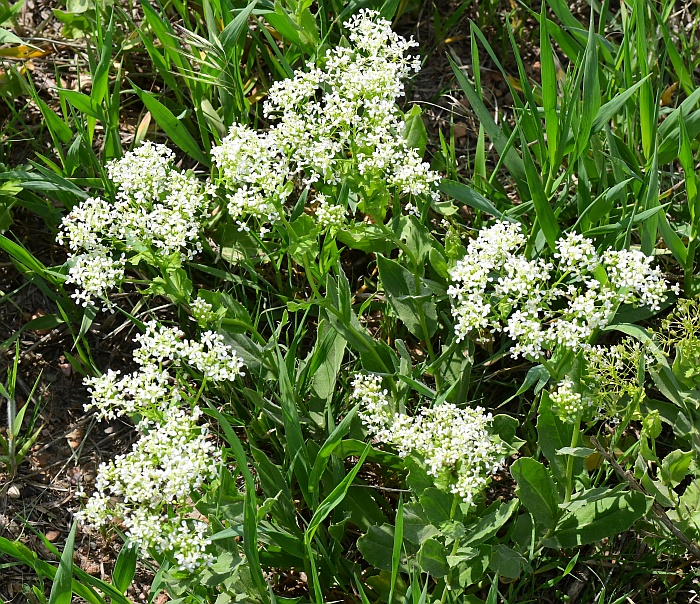Lepidium draba L.
Heart-Podded Hoary Cress

Introduced
CC = *
CW = 5
MOC = 10
© SRTurner
Lepidium draba L.Heart-Podded Hoary Cress | |
 |
Introduced CC = * CW = 5 MOC = 10 |
© SRTurner |
|
Family - Brassicaceae Habit - Perennial forb with long-creeping, branched rhizomes, often forming dense colonies. Stems - Ascending to erect, 20-65 cm long, often multiple from base, branched in the upper third, densely pubescent, sometimes the upper portion becoming nearly glabrous at maturity.
Leaves - Alternate, sessile. Lowermost leaves petiolate, 3.0-10.0 cm long, obovate to oblanceolate, the middle and upper leaves sessile, clasping the stem with rounded or bluntly pointed auricles, densely pubescent, ovate or oblong to oblanceolate, 2-8 cm long, dentate or nearly entire.
Inflorescence - flat-topped panicles or racemes, not elongated in fruit.
Flowers - Sepals 1.5-2.2 mm long, oblong. Petals 4, white, free, clawed, glabrous, typically spreading, 3.0-4.0 mm long. Stamens 6. Styles 1.0-1.8 mm long. Filaments 3 mm long, white, glabrous. Anthers 0.5 mm long. Nectaries present at base of stamens and surrounding ovary. Style 1 mm long, yellowish-green. Stigma capitate, globose. Ovary superior, compressed, ovoid, yellowish-green, glabrous, 1.8 mm long in flower.
Fruits - Silicles 3.0-5.0 mm long, cordate or ovate, strongly indented or grooved at the replum, rounded or obtuse to truncate at the base, the valves not inflated, flattened, glabrous, keeled, not winged, prominently veined, the fruit stalk 4.5-11.0 mm long. Seeds 1.5-2.0 mm long, not winged, the surface with a relatively prominent but fine, netlike or honeycomblike pattern of ridges and pits, dark brown.
Flowering - April - July. Habitat - Roadsides, railroads, and open, disturbed areas. Origin - Native to Eurasia. Lookalikes - Lepidium chalepense. Other info. - This introduced species is not very common in Missouri. It is far more common to our west, and indeed is considered a noxious weed throughout much of the western half of the U.S. It is fairly easy to ID in the field from its clasping dentate leaves and crowded, mostly flat-topped, inflorescences of tiny white flowers. Having long rhizomes, it tends to form large colonies. In appearance it is very similar to Lepidium chalepense, which is probably a little more common in Missouri. Fruit details are a primary distinguising feature. In L. draba, the fruits are flattened, with cordate bases and a netlike surface texture. In L. chalepense, the fruits are more inflated, more rounded at the base, and with smoother faces. Photographs taken off Farley Road, Platte County, MO., 5-5-01 (DETenaglia); also along a roadside just south of Guide Rock, Webster County, NE, 5-8-2025 (SRTurner). |